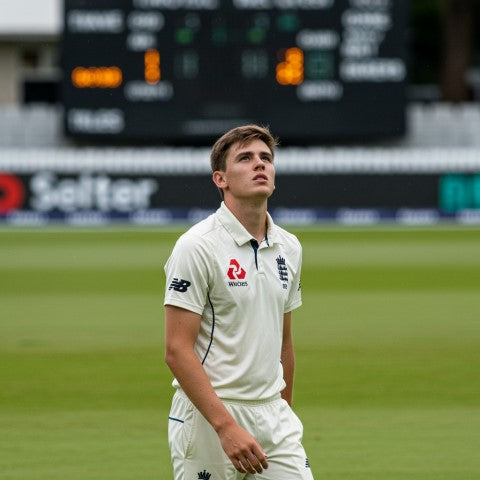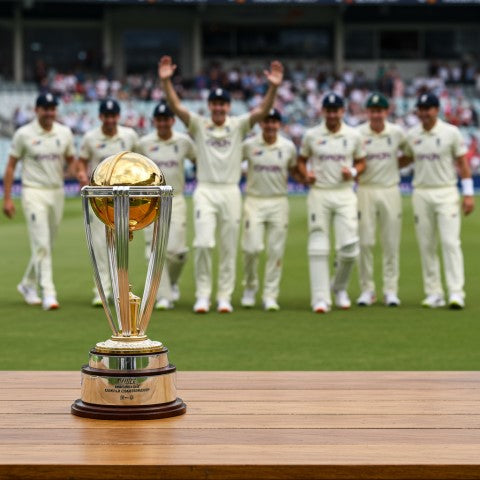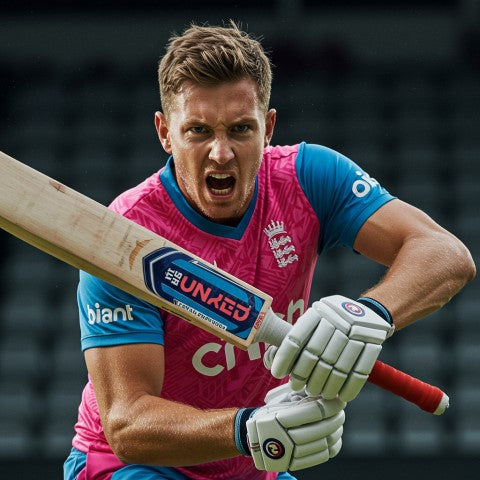What is the Difference Between ICC Champions Trophy and World Cup?

International cricket is defined by its global tournaments, and two of the most significant are the ICC Champions Trophy and the ICC Cricket World Cup. Both are played in the one-day international format and both carry immense prestige, yet they are far from identical. Fans often debate their relative importance, while players view success in either as career-defining.
The comparison is natural. Both tournaments bring together the world’s best cricketing nations, both crown champions who carry glory for years, and both have produced some of the most memorable matches in ODI history. Yet they were created with different purposes, follow contrasting structures, and occupy unique places in the ICC calendar.
This article explores the difference between the Champions Trophy and World Cup, tracing their origins, analysing their formats, examining their records, and discussing their commercial impact. By the end, the reasons why both tournaments remain vital will be clear, even if one stands taller in cricket’s hierarchy.
Origins and Purpose of Each Tournament
The Champions Trophy was first played in 1998 as the ICC KnockOut Trophy in Dhaka, Bangladesh. It was designed as a shorter and sharper event that could fit into the cricketing calendar more frequently than the World Cup. The aim was twofold: to raise funds for global cricket development and to give fans a concentrated version of world-class one-day cricket. South Africa won the first edition, setting the tone for a tournament built on high-stakes encounters.
By contrast, the Cricket World Cup predates the Champions Trophy by more than two decades. First staged in 1975 in England, it quickly became the premier event of one-day cricket. The World Cup was born at a time when limited-overs cricket was still establishing itself, and it provided the perfect platform for the format’s rise. Since then, it has expanded in size and global reach, becoming the most-watched event in the cricketing world.
The Champions Trophy was thus introduced as a supplement, not a rival. It filled the gap between World Cups by delivering a condensed, elite competition. The World Cup, meanwhile, has always been the ICC’s flagship, carrying unmatched weight in terms of prestige, history, and cultural significance. Together, they represent two sides of the ODI coin: the spectacle of the World Cup and the intensity of the Champions Trophy.
Tournament Format and Structure
One of the clearest differences between the Champions Trophy and the World Cup is their structure.
The Champions Trophy is compact by design. For most of its history, it has involved the top eight ODI teams. The tournament often uses two groups of four, followed by semi-finals and a final. The entire event usually lasts two to three weeks, with about 15 matches in total. The result is a schedule where every fixture carries weight. There are no warm-up matches against weaker opponents. From the very beginning, teams face elite rivals, which creates intensity and unpredictability.
The World Cup is far larger. It traditionally brings together a broader field of nations, often 10 to 14 teams, and includes group stages or round-robin leagues before the knockout rounds. The 2019 edition, for example, used a full league format, while the 2023 tournament featured 10 teams in a round-robin format followed by semi-finals and a final. With 45 or more matches, the World Cup typically stretches over six weeks.
These differences affect audience experience. The Champions Trophy feels like a sprint, offering instant drama and requiring teams to hit form immediately. The World Cup feels like a marathon, giving teams time to recover from setbacks and allowing storylines to build over weeks. Both approaches have their appeal: the Trophy for its urgency, and the Cup for its grandeur.
Qualification and Participation
Another significant difference between the Champions Trophy and the World Cup lies in who gets to play.
The Champions Trophy has always been exclusive. Traditionally, qualification depended on the ICC ODI rankings, with the top eight teams securing a place. This meant that only the best-performing sides were invited, creating an elite, high-quality competition. While this exclusivity added prestige, it also meant that some major teams occasionally missed out due to dips in form, and emerging nations were shut out entirely.
The World Cup, on the other hand, has inclusivity at its core. It is open not only to the Test-playing nations but also to Associate members. Through qualifying tournaments, emerging teams like Kenya, Ireland, and Afghanistan have gained entry and made lasting impressions. Kenya’s semi-final run in 2003 and Ireland’s famous wins over Pakistan (2007) and England (2011) are reminders of how the World Cup serves as a stage for global cricket development.
In essence, the Champions Trophy is about exclusivity and quality, while the World Cup is about inclusivity and reach. Each approach has benefits: the Trophy guarantees high-calibre matches, while the Cup broadens the game’s footprint.
Global Reach and Prestige
The Cricket World Cup stands as the ultimate event in the sport. Its prestige is comparable to the Olympics or the FIFA World Cup within their respective fields. Winning it is considered the highest achievement in ODI cricket, and lifting the trophy can transform the sporting identity of a nation, as seen with India in 1983 or Sri Lanka in 1996.
The Champions Trophy, by contrast, is often described as the “mini World Cup”. It does not carry the same historical weight, but it does command respect for its intensity. Players relish the challenge of facing only top-tier opponents, and fans enjoy the quick-fire excitement.
Sponsors and broadcasters also perceive the two differently. The World Cup is the ICC’s crown jewel, attracting record-breaking television deals, global marketing campaigns, and billions of viewers. The Champions Trophy, while smaller, still provides a valuable property. Its shorter length makes it more manageable for broadcasters and ensures that high-quality matches dominate the schedule.
In terms of prestige, the World Cup is unrivalled. Yet the Champions Trophy has carved out its own identity as a sharp-edged tournament where champions are truly tested from the first ball.
Records and Historic Moments
The Champions Trophy has had its fair share of iconic moments. South Africa’s victory in 1998 remains its only ICC trophy to date. New Zealand’s upset win in 2000, Chris Gayle’s prolific batting across multiple editions, and Pakistan’s stunning triumph over India in the 2017 final all remain etched in memory. The shared trophy of 2002, when India and Sri Lanka split the honours after rain, stands as a quirky reminder of cricket’s unpredictability.
The World Cup, however, has provided some of the most famous moments in sporting history. India’s underdog win in 1983 changed the trajectory of cricket in the subcontinent. Australia’s dominance from 1999 to 2007, winning three consecutive titles, defined an era. Sri Lanka’s dazzling run in 1996 and England’s dramatic Super Over triumph in 2019 are part of global sporting folklore.
The difference lies in impact. Champions Trophy highlights are cherished as classics among fans, but World Cup moments are transformative events that shape cricket’s global narrative. When Kapil Dev lifted the World Cup in 1983 or when Ben Stokes led England to victory in 2019, the ripple effects reached far beyond the boundary ropes.
Financial and Commercial Impact
From a financial standpoint, the World Cup is the ICC’s most lucrative property. It attracts massive sponsorship deals, record-breaking broadcast rights, and billions of dollars in revenue. With its long duration, large audience, and global attention, it is the event around which the ICC builds its commercial model.
The Champions Trophy, while valuable, plays a secondary role. Its compact nature means fewer matches, less advertising inventory, and a smaller footprint. Yet its appeal lies in its efficiency. Broadcasters benefit from concentrated big-match line-ups, and sponsors get visibility during contests that draw guaranteed viewership.
In financial terms, there is no comparison: the World Cup is the flagship, and the Champions Trophy is the premium side event. However, both contribute to the ICC’s revenue stream and serve different purposes in the cricket economy. The Trophy keeps interest alive between World Cups, while the Cup itself remains the ultimate financial powerhouse.
Recent Developments and the 2025 Landscape
The Champions Trophy experienced a long pause after the 2017 edition, when it was thought to be discontinued. However, the ICC reinstated it in its event cycle, and the tournament returned in 2025. Hosted by Pakistan with India’s matches played in Dubai, the 2025 edition was a reminder of why the event still matters. India lifted their third title, confirming their place as the most successful side in the competition’s history.
The World Cup has also undergone changes. Its formats have evolved to balance inclusivity with competitiveness, shifting between group stages, Super Six formats, and full round-robins. The 2023 edition maintained a 10-team structure, while discussions continue about expanding future tournaments. With scheduling pressures from T20 leagues, the World Cup remains central to the ICC’s calendar, but the need to adapt is clear.
Together, the 2025 Champions Trophy and recent World Cups show that both tournaments still have a strong future. They are complementary: one brings intensity in a short burst, while the other delivers cricket’s grandest narrative.
Which Tournament Matters More?
The difference between the Champions Trophy and the World Cup cannot be measured in absolute terms of importance. The World Cup is undoubtedly the pinnacle of ODI cricket, the tournament that players dream of winning above all else. Yet the Champions Trophy has its own crucial role. Its condensed format ensures excitement, and its exclusivity guarantees high-level competition.
For fans, both tournaments matter. The World Cup provides the spectacle, while the Champions Trophy offers pure intensity. In the end, each serves a unique purpose in keeping ODI cricket alive and relevant.
Champions Trophy vs World Cup: Quick Comparison
| Feature | ICC Champions Trophy | ICC Cricket World Cup |
|---|---|---|
| First Edition | 1998 (as ICC KnockOut Trophy) | 1975 |
| Frequency | Irregular, usually every 4 years | Every 4 years |
| Duration | 2–3 weeks | 6–7 weeks |
| Number of Teams | Traditionally, 8 (only top-ranked ODI nations) | 10–14, including qualifiers and Associate nations |
| Format | Compact groups and knockouts | Larger group stages or round-robin plus knockouts |
| Qualification | Based on ODI rankings or World Cup league standings | Open to full members and through global qualifiers |
| Prestige | Known as the “mini World Cup”, valued for its intensity | The ultimate prize in ODI cricket, global significance |
| Records | Notable: Pakistan’s 2017 win over India, Chris Gayle’s runs, India’s 3 titles | Iconic: India 1983, Sri Lanka 1996, Australia’s 3 in a row, England’s 2019 Super Over |
| Commercial Value | High-profile but secondary ICC event | ICC’s flagship, biggest revenue generator |
| Role in ICC Calendar | Provides elite competition between World Cups | Centrepiece of ODI cricket, shapes history |
Conclusion
The ICC Champions Trophy and Cricket World Cup may appear similar, but they differ significantly in purpose, structure, qualification, prestige, and commercial weight. The World Cup is cricket’s grandest stage, inclusive and transformative. The Champions Trophy is its sharper sibling, built for high-stakes contests in a shorter timeframe.
Both tournaments remain essential to cricket’s future. They reflect different sides of the same coin: one offering the spectacle of a marathon, the other the thrill of a sprint. Together, they keep one-day cricket at the heart of the sport’s global story.





Leave a comment